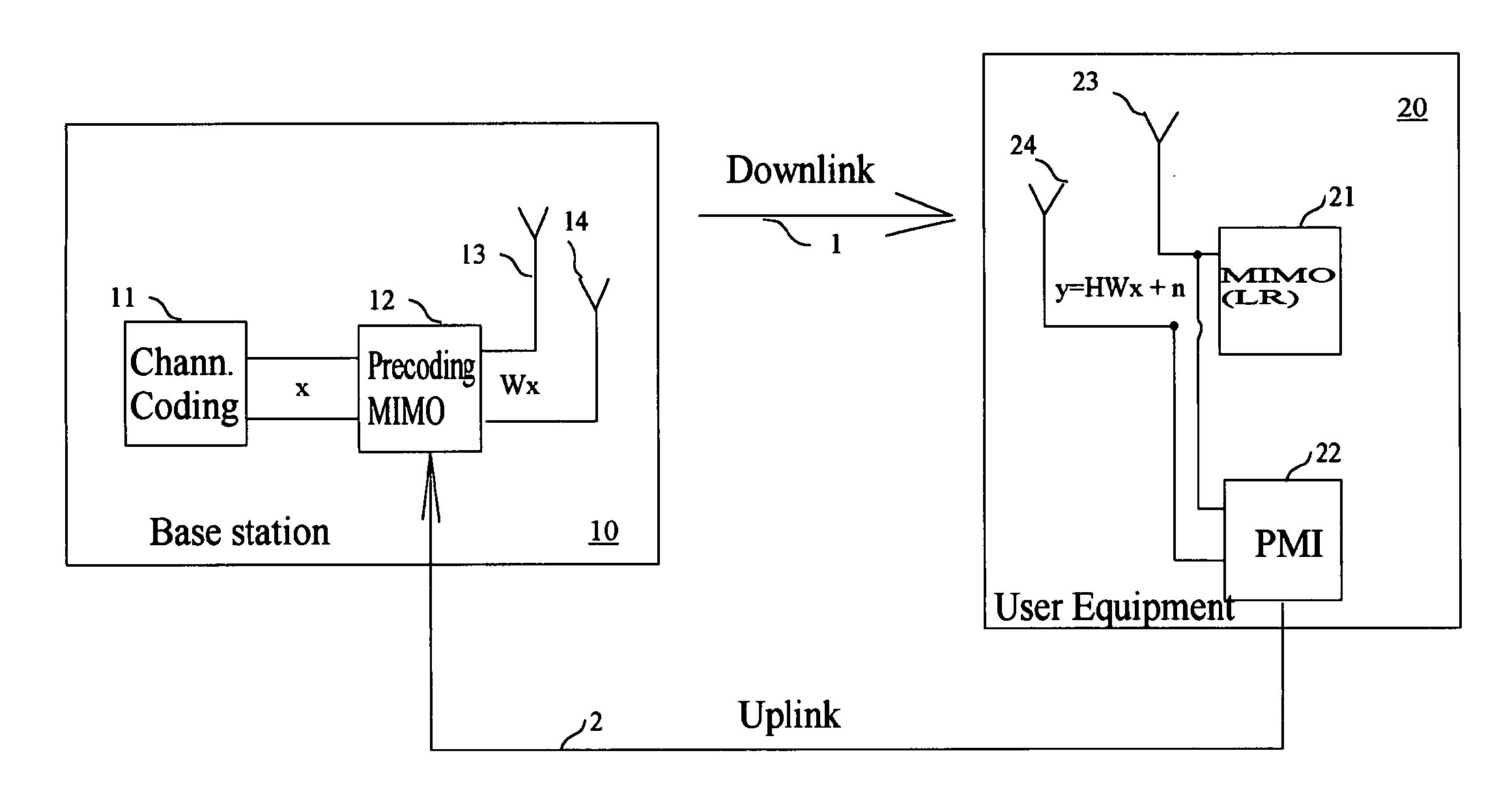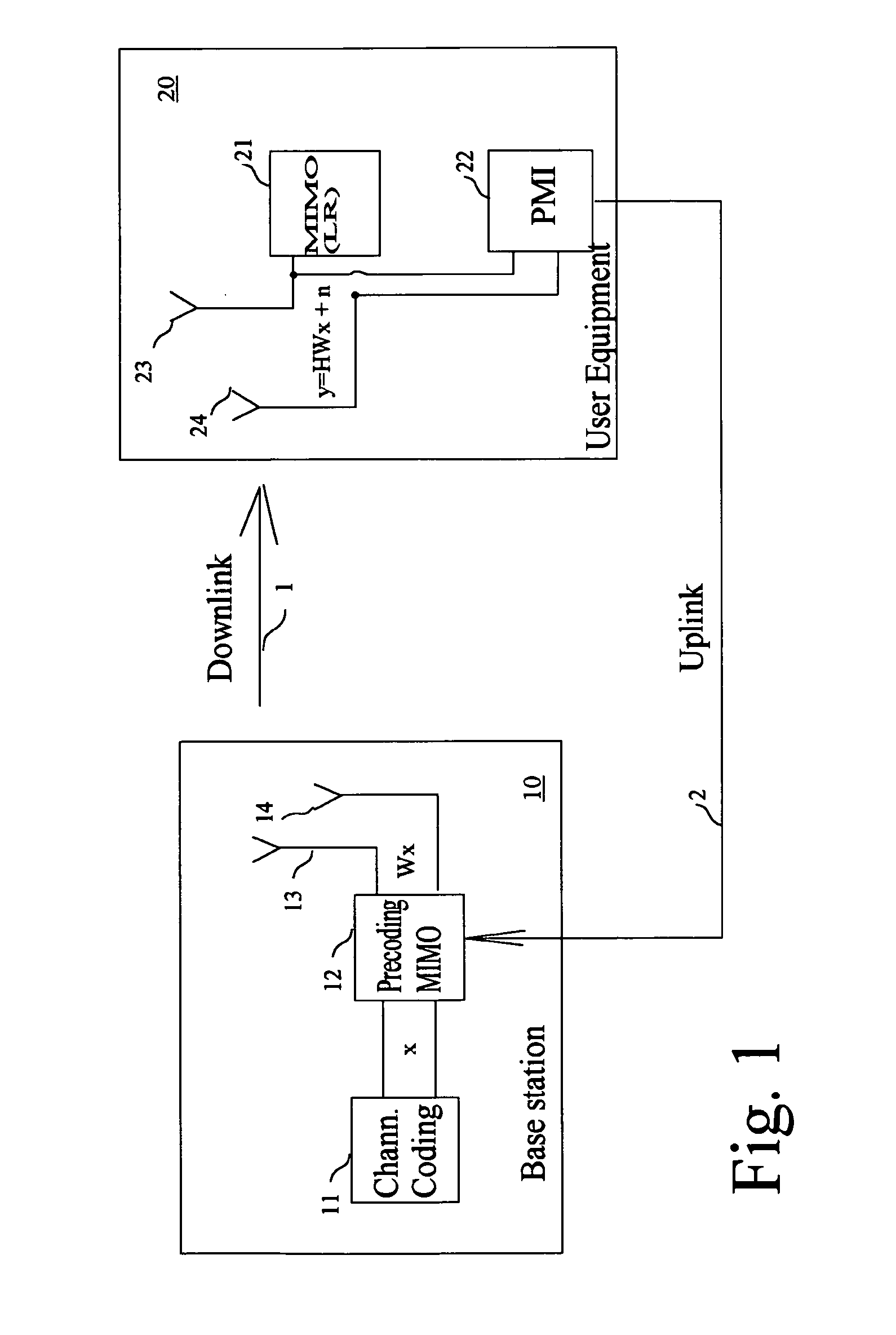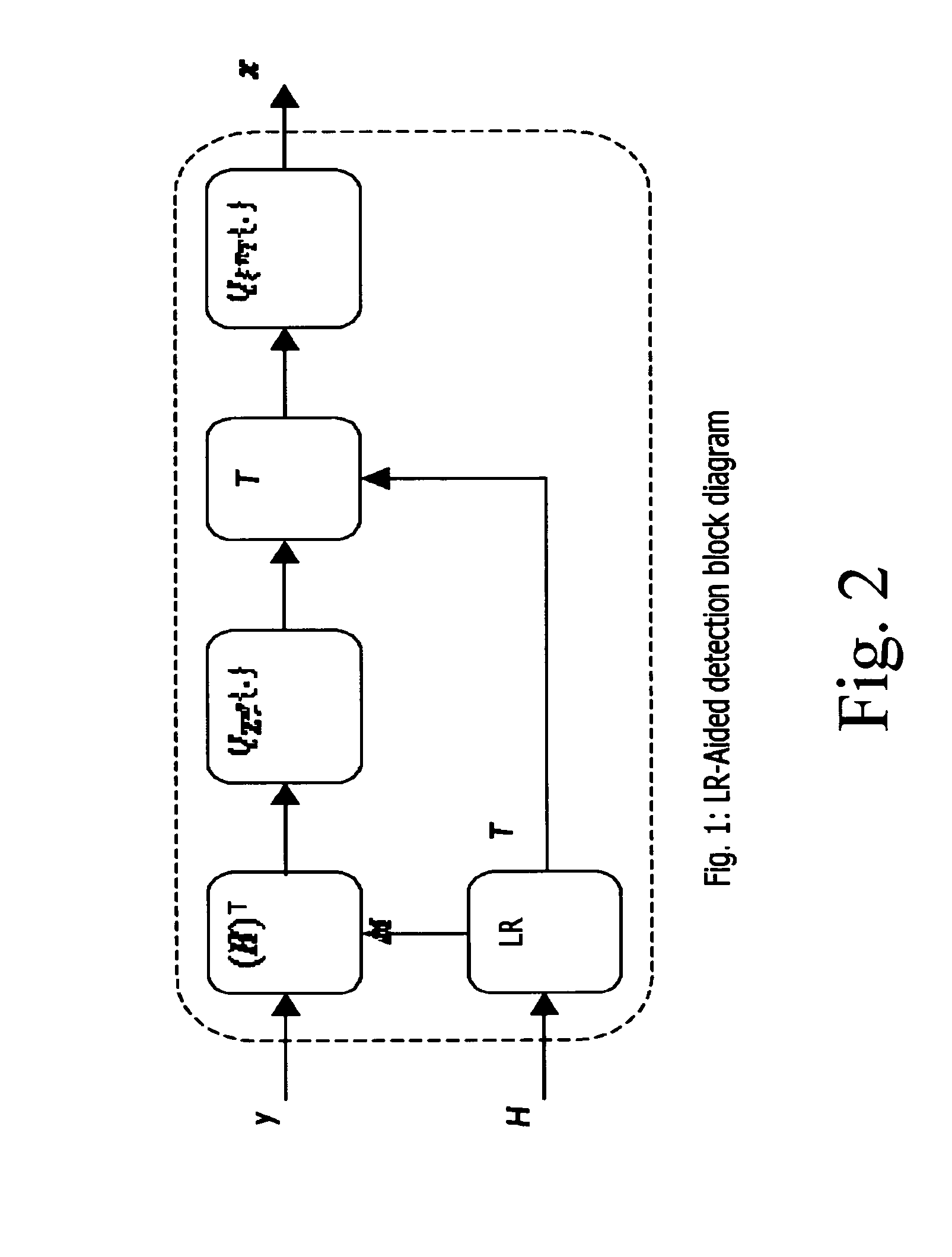Precoding Matrix Index Selection Process for a MIMO Receiver Based on a Near-ML Detection, and Apparatus for Doing the Same
a mimo receiver and near-ml detection technology, applied in the field of wireless communication, can solve the problems of less advantageous techniques, limited interest, and selection criteria (c-sc) to achieve the effect of reducing the complexity of a mimo receiver
- Summary
- Abstract
- Description
- Claims
- Application Information
AI Technical Summary
Benefits of technology
Problems solved by technology
Method used
Image
Examples
Embodiment Construction
[0040]The process which will be described hereinafter can be embodied in a wide number of applications. Clearly, any OFDM standard supporting MIMO spatial-multiplexing mode, e.g. IEEE 802.16, IEEE 802.11, 3GPP LTE and 3GPP LTE-A, can take advantage of the process described below.
[0041]More particularly, the invention is particularly advantageous in the case of a large number of antennas and consequently in the case of the 3GPP LTE-A standard.
[0042]The process which will be described below with details is particularly useful for decreasing the complexity of a Lattice Reduction-Aided (LRA) detector which achieves high efficiency.
[0043]Indeed, it has been discovered by the inventors that Lattice Reduction-Aided (LRA) detection can be advantageously combined with a closed loop precoding technique, associated with one new Precoding Matrix Index (PMI) selection criterion having the effect of improving the conditionning of the channel matrix in the perspective of the LRA computation.
[0044]...
PUM
 Login to View More
Login to View More Abstract
Description
Claims
Application Information
 Login to View More
Login to View More - R&D
- Intellectual Property
- Life Sciences
- Materials
- Tech Scout
- Unparalleled Data Quality
- Higher Quality Content
- 60% Fewer Hallucinations
Browse by: Latest US Patents, China's latest patents, Technical Efficacy Thesaurus, Application Domain, Technology Topic, Popular Technical Reports.
© 2025 PatSnap. All rights reserved.Legal|Privacy policy|Modern Slavery Act Transparency Statement|Sitemap|About US| Contact US: help@patsnap.com



